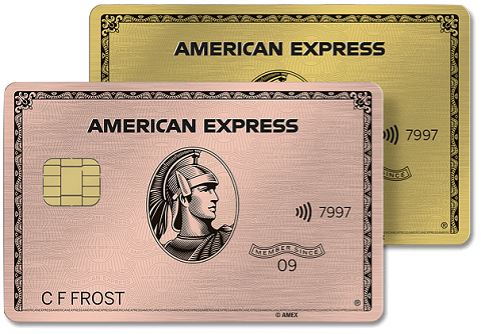If you know what an airplane is, then you’ve heard of Delta. It’s one of the largest and most well-known airlines in the world (despite some massive, less-than-ideal changes to its loyalty program 😭).
If you’re lookin’ to learn all you can about Delta, and whether or not you should join millions of other flyers who take advantage of their loyalty program each year, then you’ve come to the right place.
AT A GLANCE
➡️ Delta is a member of the SkyTeam alliance.
➡️ Delta miles are worth around 1.2 cents each.
➡️ Join the Delta SkyMiles program for free!
➡️ See all Delta co-branded cards here.
What is Delta SkyMiles?

SkyMiles is Delta’s frequent flyer loyalty program. When you have a SkyMiles account and fly on a paid ticket for Delta or its SkyTeam partners, you will earn those coveted Delta miles and have them deposited straight into your account after each journey.
There are other ways to earn Delta miles (which we’ll talk about later), but once you have accumulated enough of them, you can use those miles for free or significantly discounted travel.
Want to sign up for a SkyMiles account? It’s free! 🎉
Why should you care about Delta SkyMiles?
Well, for starters, Delta has a massive, global network. Their own website even says you can travel to over 1,000 destinations thanks to the airline’s own routes, and in addition to its partners’ routes.
Their largest airport hub is in Atlanta, but they’ve also got eight other locations that they call home: Boston, Detroit, New York’s JFK and LaGuardia, Salt Lake City, and Seattle.
So if you fly in and out of those airports, or call one of them your home base, Delta is worth looking into.
Delta’s status as a founding member of SkyTeam (with 19 current alliance members) also means you can reach just about anywhere on the globe.

SkyTeam members
And beyond its SkyTeam members, Delta also holds partnerships with a few non-SkyTeam airlines: LATAM, Cape Air, China Southern Airlines, Hawaiian Airlines, and WestJet.
And better yet? Delta miles don’t expire 🤗
How do you earn Delta SkyMiles?
There are a number of ways to earn Delta SkyMiles. It might initially seem confusing and overwhelming, but it’s actually great news—more ways to earn means… well, more ways to earn!
You can get into some really niche areas here, but in this guide, we’ll cover some of the most popular and common ways you can earn Delta miles.
1. Earn when you fly
The most obvious way of earning SkyMiles is by flying with Delta (or its partners), but the number of miles you earn depends on several factors.
When you fly with Delta (marketed and operated flights), you’ll earn 5x miles per dollar for your ticket’s base fare price (excluding taxes and fees) if you don’t hold elite status.
If you do have elite status, you’ll earn a designated number of miles per dollar spent as follows:
Silver: 7x miles
Gold: 8x miles
Platinum: 9x miles
Diamond: 11x miles
So if you bought a $500 ticket on a Delta-operated flight, and you aren’t an elite member, you’d earn 2,500 SkyMiles ($500 × 5).
If you fly on Delta’s partner airlines… the earning structure starts to get a little weird and confusing, but bear with me.
If you booked a ticket through delta.com, but the flight was operated by another airline… you’d still earn the same standard 5x miles per dollar for non-elites because the flight was technically marketed by Delta (you booked it on their site).
However, if you book a flight on a partner airline through that airline’s website and put in your Delta SkyMiles number, you’ll earn miles based on the distance flown with that airline.
That number still varies, though, because it’ll depend on the partner airline’s rules for earning based on the fare class you booked and your elite status (if you have any).
You can pretty much guarantee that the higher the fare class you book, the more miles you’ll earn. That holds true for elite status, too.
So just know that you can still earn miles when you fly on partner airlines, but how many miles you earn depends on different factors related to that partner airline, and not Delta.
Delta has an entire page dedicated to earning miles with partner airlines if you want more details about a specific airline.
2. Spend on a credit card

Delta has several co-branded cards with American Express that offer varying levels of perks and earning structures. Our picks include:
There are also the business versions of all these cards:
So depending on where you are in your travel credit card journey, what types of benefits you want from a card, and how much of an annual fee you’re comfortable with, you can select the card that works for you.
For example, the Delta Gold has the lowest annual fee but it doesn’t really come with any elite travel perks.
You do earn 2x miles not only on Delta purchases, but also at restaurants and U.S. supermarkets, so it has a practical earning structure for daily spending if that’s what you’re after.
Delta’s higher-tiered cards, the Platinum and Reserve, start to introduce higher spending categories, a boost towards Medallion status, and additional travel-specific perks (some lounge access, TSA PreCheck® or Global Entry credit, priority boarding, etc.). It’ll cost you in terms of an increased annual fee, though.
💡Pro tip: Get 15% off award redemptions for Delta flights when you use your miles and pay the taxes and fees with an eligible card — just make sure you have your Delta card linked to your account to receive this discount!
Since we’re talking about travel cards, I should also mention here that you can transfer your miles and points earned on other cards issued by American Express—like American Express Platinum Card® and the American Express® Gold Card to your SkyMiles account at a 1:1 ratio.
Just know that you’ll be charged a fee of $0.0006 per mile (up to $99), so that transfer will incur a fee.
But by transferring points into your Delta account, you can easily boost your total SkyMiles in order to book that awesome flight you’ve been eyeing 👀
💡 Pro tip: You can also transfer Marriott Bonvoy points to Delta at a 3:1 ratio. Plus, you’ll get a 5,000-mile bonus for every 60,000 Marriott points you transfer over; however, I recommend using your Marriott points to stay at Marriott properties to get the best bang for your buck.
3. Rack up miles for shopping and dining
I personally love eating and shopping… and I’m sure there’s a handful of you out there who are in the same boat.
Fortunately, you can earn some additional miles by using Delta’s online shopping portal: SkyMiles Shopping. You’ll get access to over 1,000 retail stores that offer varying levels of boosted points and other rewards.
Just make sure you sign up on the SkyMiles Shopping site and click through to a merchant via the online shopping portal.
As an example, I’m looking to buy some additional base layers and gloves for the cooler fall cycling season from Backcountry. If I purchase those items via the shopping portal, I’ll be earning 3.5x miles per dollar, as opposed to just 1x mile per dollar if I went directly to Backcountry’s site! 👇

When it comes to food, Delta also has their SkyMiles Dining program. Sign up for it, link a card (can be any credit card!), and when you swipe that card at participating restaurants, you’ll earn additional SkyMiles.
Within SkyMiles Dining, there are three tiers: standard members (1x mile/$2), select members (3x miles/$1), and VIP members (5x miles per $1).
You can reach these by simply registering your email and then making a certain number of qualifying dining transactions a year.
These bonus miles are in addition to what you’d earn with whatever card you register with the program. Hint hint, a card like the Amex Gold gets you 4x points at global restaurants (up to $50,000 per calendar year, then 1x points thereafter). 😉
4. Book with travel partners
You can earn varying levels of bonus SkyMiles with these travel partners and experiences:
Link your Delta and Lyft accounts
Book with Delta Vacations
Earn on Delta Cruises
Stay at eligible Airbnbs
Book with Delta’s hotel booking portal
Rent a car with Delta’s partner companies
5. Buy Delta SkyMiles
This option is honestly pretty “meh,” but it is an option to know about. I would only use this if I needed a smaller amount of Delta miles to top off my account in order to book a worthy award flight.
…and that is because Delta charges a craaazy $0.035 per SkyMile, and you must buy them in 2,000 mile increments.
So buyer beware, and only use when absolutely needed.
How do you get elite status and benefits?

Funny you should ask, because Delta has taken some major heat recently for less-than-ideal changes to their program.
And people are not happy about it.
Delta then came back and was like oopsie… maybe we went too far? There might be upcoming changes, but here are the deets as they stand currently.
Delta’s loyalty program comes in the form of Medallion levels: Silver, Gold, Platinum, and Diamond. These tiers of status have historically been dependent upon Medallion Qualifying Miles (MQMs), Medallion Qualifying Segment (MQSs), and Medallion Qualifying Dollars (MQDs).
However, Delta is slashing its MQMs and MQSs as a trade-off for a single “revamped” version of MQDs as a means of earning status.
In the past, MQDs have essentially been a spending metric on Delta purchases that helped you earn this status (in addition to the MQMs and MQSs). So the more $$$ you spent, the more MQDs you’d get.
But now, beginning on January 1st, 2024, the airline is “boasting” that you’ll be able to earn MQDs in a ton of different ways, instead of just on Delta purchases (or its partners).
Here’s the new earning structure, and for reference, the amount of MQDs needed to reach each status threshold 👇

These thresholds have gone waaay up, btw.
You might initially think, “Wow! Thanks Delta! More ways to earn MQDs now!”
BUT DON’T. Because the not-so-nice news is coming.
There is a big-ass devaluation to how these MQDs work for those of you who have eligible Delta co-branded credit cards.
If you were previously a holder of an eligible card, Delta would personally waive MQD thresholds up to Platinum Medallion status if you spent $25,000 in a year (annual spending of $250K would waive other Diamond Medallion requirements for the big boys and girls).
But now, if you’re spending on Delta’s eligible co-branded cards, you’re only getting 1 MQD per $20 spent on its mid-tiered card, or 1 MQD per $10 spent on their premium purple card.
So if we do some icky math here, that means spending $25k would only translate to 1,250 MQDs or 2,500 MQDs, respectively.
Even on the premium card, spending $25k doesn’t even get you halfway to the entry-level Silver Medallion status (2,500 of 6,000 MQDs needed—see chart above) 🤯

And the big players in the game who spend a whopping $250k on eligible cards per year will no longer be waived through to the top of the totem pole for Diamond Medallion status.
Instead, with a $250k spend, they’d still only earn 12,500 or 25,000 MQDs based on the eligible cards’ earning structure—that’s still 10,000 MQDs lower than the 25,000 needed.
I get that Delta is trying to increase loyal member engagement and earning across multiple platforms and travel experiences (as opposed to just flights), but seriously… OUCH.
Needless to say, earning status on Delta just got hard... and expensive.
Delta has also mentioned some changes coming to its Sky Club lounge access that you can read here.
How do you redeem Delta SkyMiles?
Delta’s SkyMiles program is notoriously unpredictable when it comes to booking award flights due to its dynamic pricing.
Not to fear though, your Delta miles still hold some good value if you use them in the right way.
1. Redeem by flying with Delta and its partners
I think this is the best and easiest way to use your Delta miles. After all, this doesn’t involve the anxiety-inducing tactic of having to transfer points from a credit card to an airline.
You can check Delta’s award sale page if you’re flexible on date and destination, and just want to see what’s out there.
This page regularly lists ongoing deals on award flights, but keep in mind, it’ll change frequently.
If you’ve got a specific route in mind, you can simply head to Delta’s site and search for your flight with the Miles option toggled on.
And because Delta doesn’t publish an award chart (e.g. they use dynamic pricing), the number of miles listed closely ebbs and flows as the cash price changes.
This is nice in the sense that if the cash price drops for the flight, the miles needed will likely drop as well.
However, this negates the ability to find a good redemption to a popular city, or a popular event (like Cancun on spring break or New Year’s Eve in New York) because the demand will drive up the cash price, and therefore drive up the miles needed as well.
Additionally, I always check the cash price to see if the amount of miles they are proposing makes sense. We’ll talk about how to determine this value in the next section.
And remember, Delta is part of the SkyTeam alliance, so you can use your Delta miles to book flights on these partners as well 🤗
💡Pro tip: Because of the lack of a Delta award chart, that means there are no blackout dates when redeeming your miles! Any flight with availability is free game for a SkyMiles redemption. But remember, sometimes these redemptions are a great deal, and sometimes they definitely aren’t.
2. Upgrade your Delta flight
If an upgrade is available, you’ll likely see this pop up on your reservation page.
You have the option to upgrade with cash or miles, and if it makes sense to do so, it’s usually a fun way to use miles and get a better experience on your flight.
For example, if you were offered an upgrade for either $69 USD or 6,500 miles, that values your miles close to 1 cent each, which isn’t far off from their “typical” 1.2 cent valuation.
I’ll show you how to determine this valuation next!
When should you use miles instead of cash?

What can I say… I’m keeping my promise 😉 So what’s the answer??
It depends.
Boom. Mind-blowing, I know.
The truth is, there’s no right or wrong way to use your miles to get a nearly free flight. BUT, if you want to maximize the value out of your miles, there is an equation you can use to determine if the award seat you’re looking at is a good deal or not 👇
(cash price) - (taxes and fees) / (miles cost) = value per mile
We’ve already determined that Delta SkyMiles are worth 1.2 cents each.
So let’s say you’re looking at an award booking that costs 9,500 miles and $6.00 in taxes and fees, and the cash price for the same flight is $230.
Just plug those numbers into our handy equation, and you’ll get this:
($230) - ($6.00) / (9,500) = .023
You just move that bad boy decimal over two spots, and you’re left with a value for your points at 2.3 cents apiece. This is great, considering they are typically worth closer to 1.2 cents.
Book that flight!
They may not always be this good, which is why it’s important to do this calculation for each flight to ensure you’re maximizing your miles in the best way.
Bottom Line
Delta is a big boy airline, produces some big boy miles, and flies to many big boy destinations around the world (with the help of their alliance partners).
It’s unfortunate that they made some crappy changes to their loyalty program recently, but I think there is still value to be had with their program, especially if you’re sitting on a fat stack of SkyMiles.
















